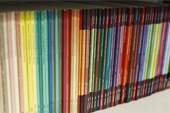
Predatory publishing
Hampshire, Committee on Publication Ethics, 2019
This site belongs to UNESCO’s International Institute for Educational Planning

India
Press
Amarjot Kaur - The Tribune

South Africa
Press
Edwin Naidu - University World News

Hampshire, Committee on Publication Ethics, 2019

Iran, Islamic Republic
Press
Neuroskeptic - Discover

Côte d'Ivoire
Press
Haby Niakaté - Le Monde

UK
Press
Nisha Gaind - Nature

Canada, India
Press
Tom Spears - Ottawa Citizen

Singapore
Press
Yuen Sin - The Straits Times
Stay informed About Etico
Sign up to the ETICO bulletin to receive the latest updates
Submit your content
Help us grow our library by sharing your content on corruption in education.